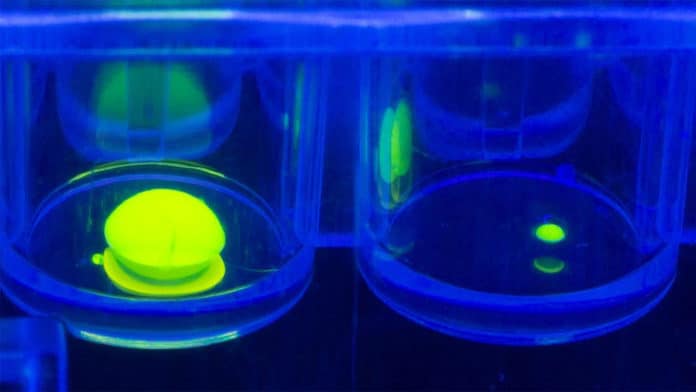Pharmaceutical companies usually use high-throughput screening to determine a drug candidate. It involves testing large numbers of chemical compounds to see which will bind to a protein that targets the disease they want to address.
In most cases, screening classical small-molecule compounds can’t identify drug candidates as they don’t contain a compound that binds sufficiently strong to the target.
The solution lies in ‘macrocycles,’ an emerging class of molecules that have proven ideal for difficult binding targets. However, the problem is that current macrocycle libraries only contain less than 10,000 compounds. This limits the chance of finding drug candidates that can bind a given disease target.
Scientists at EPFL have found a way to synthesize large numbers of macrocyclic compounds. This can significantly increase the sizes of available libraries.
The new approach involves combining a large number ‘m’ of different macrocyclic scaffolds with a myriad of ‘n’ chemical fragments to generate ‘m×n’ of different macrocyclic compounds.
Professor Christian Heinis at EPFL’s School of Basic Sciences said, “For example, we generated a library of 19,968 macrocycles by reacting 192 macrocycle scaffolds with 104 carboxylic acid fragments.”
The scientists performed the reactions with EPFL’s Biomolecular Screening Facility in extremely quick acoustic wave-mediated reagent transfers in minuscule amounts of 40 nanoliters. In barely half a day, the library of 19,968 macrocyclic molecules was put together thanks to miniaturization and fast speed.
To test the method, the Ph.D. student leading the project, Sevan Habeshian, used it to develop nanomolar inhibitors against thrombin and the MDM2:p53 protein-protein interaction, drug targets for strokes and cancer. Scientists then got an X-ray structure of the thrombin inhibitor while it bound the protein.
Habeshian said, “The structural analysis validated the approach of screening compounds containing macrocyclic cores and laterally linked chemical fragments.”
Heinis said, “We are currently applying the approach for developing macrocyclic compounds to a range of disease targets for which pharmaceutical companies are struggling to generate drugs based on classical small molecules. Given the small size and the limited polar surface of macrocyclic compounds, they have a high chance of passing through cell membranes, which means that they can be used to develop drugs for intracellular targets or even drugs that are taken orally.”
Journal Reference:
- Sevan Habeshian, Manuel Leonardo Merz, et al. Synthesis and direct assay of large macrocycle diversities by combinatorial late-stage modification at picomole scale. Nature Communications 13, Article number: 3823 (02 July 2022). DOI: 10.1038/s41467-022-31428-8
